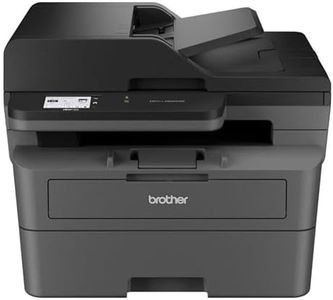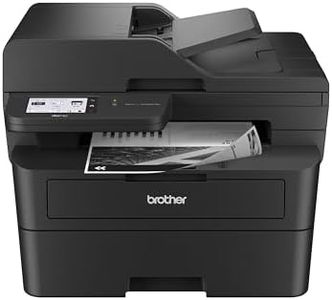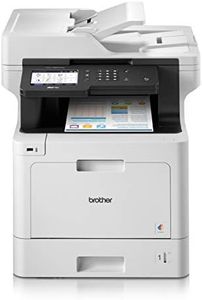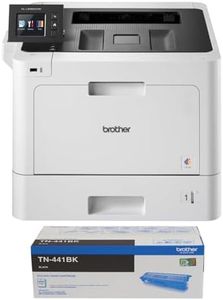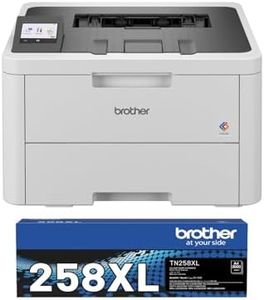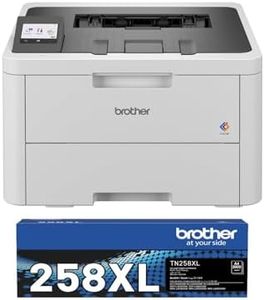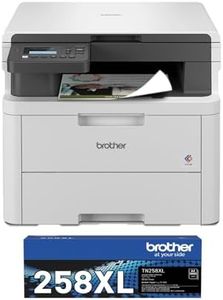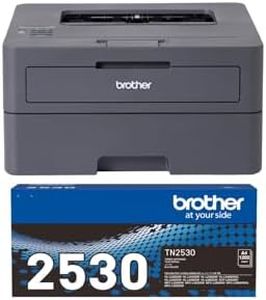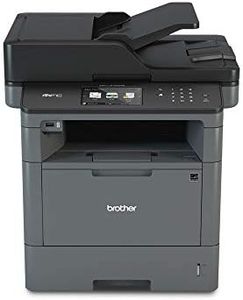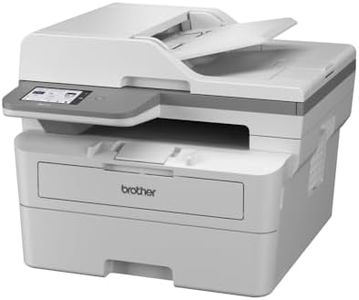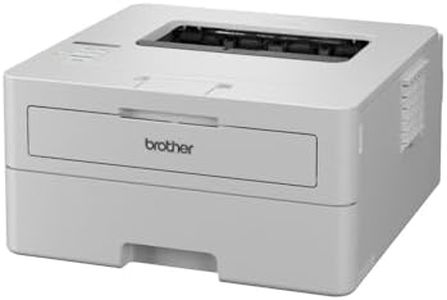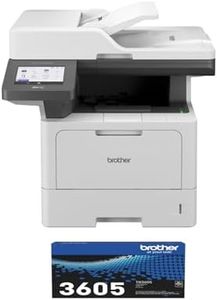We Use CookiesWe use cookies to enhance the security, performance,
functionality and for analytical and promotional activities. By continuing to browse this site you
are agreeing to our privacy policy
10 Best Brother Laser Printers
From leading brands and best sellers available on the web.Buying Guide for the Best Brother Laser Printers
Choosing the right Brother laser printer is all about understanding your printing needs and matching them with features that best support your everyday tasks. It's important to think about factors like how much you print, whether you print in color or just black and white, and if you need extras like scanning or copying. By focusing on the main specs, you can pick a printer that's reliable, efficient, and easy to use for your specific situation.Printing Technology (Mono vs Color)Printing technology tells you whether the printer is monochrome (black and white) or color. Monochrome printers are typically used for text-heavy tasks like documents, offering faster speeds and lower running costs. Color printers are better if you need to print marketing materials, photos, or projects with graphics. Deciding between these depends on what you'll be printing most often. If you do only text and basic charts, monochrome is cost-effective; for creative or business needs requiring vibrant prints, color is preferable.
Print Speed (Pages Per Minute, PPM)Print speed, measured in pages per minute, indicates how quickly the printer can produce documents. Lower speeds (up to 20 ppm) are fine for home use or occasional printing, while medium speeds (20–30 ppm) suit small offices or shared spaces with moderate demand. High speeds (over 30 ppm) are ideal for busy offices or anyone with heavy, frequent printing needs. To choose the right speed, estimate how urgent and frequent your printing tasks are—if you print large batches often, a faster printer saves time.
Print Resolution (Dots Per Inch, DPI)Print resolution refers to the sharpness of printed text and images, measured in dots per inch. Lower resolutions (600 x 600 dpi) are sufficient for standard documents, while higher resolutions (up to and above 1200 x 1200 dpi) produce sharper text and more detailed graphics, which is important for professional documents or images. If your output is mainly plain text, a standard resolution works. For presentations or marketing, a higher resolution ensures clarity and quality.
Functionality (Single-Function vs Multi-Function)Some printers only print (single-function), while others can also scan, copy, and even fax (multi-function). Multi-function printers save space and offer convenience for those needing more than just printing. If you often digitize documents or need quick copying, a multi-function model is a practical choice. For users focused solely on printing, a single-function model may be more compact and straightforward.
Connectivity OptionsConnectivity describes how you link the printer to computers and devices. Basic options include USB for direct attachment, while Wi-Fi, Ethernet, and mobile printing support (like AirPrint or Google Cloud Print) make it easy to print from laptops, phones, or across a network. If you print from multiple devices or want wireless flexibility, look for models with diverse connectivity. For single-user or dedicated setups, simpler connections suffice.
Paper Handling (Input and Output Capacity)Paper handling covers how many sheets the printer can hold at once and the types of paper it supports. Lower-capacity trays (under 250 sheets) suit home or light office use, while higher capacities (over 250 sheets or multiple trays) minimize refilling for heavy-duty use. Consider the types of documents you print, too—if you need to handle envelopes, labels, or different paper sizes, check for multi-purpose or specialized trays.
Duty Cycle (Recommended Monthly Volume)Duty cycle shows the number of pages the printer is designed to handle per month. Lower numbers fit occasional or light use, while higher numbers suit frequent, high-volume printing. If you consistently print in big volumes, pick a printer with a recommended monthly volume above your average needs to ensure reliability and long life. For light home use, a lower duty cycle is adequate.

